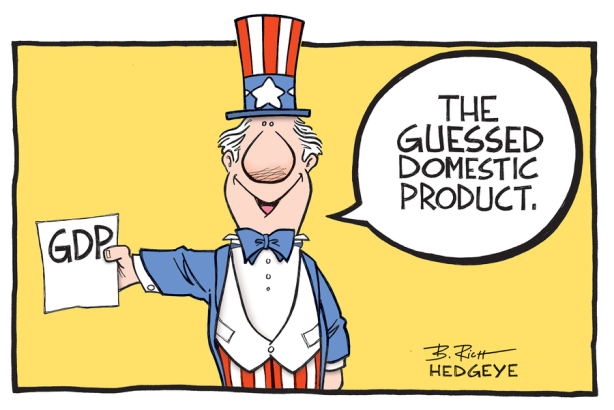From David Ruccio Mainstream economics presents quite a spectacle these days. It has no real theory of the firm and, even now, more than nine years after the Great Recession began, its most cherished claim to relevance—the use of large-scale forecasting models of the economy that assume people always behave rationally—is still misleading policymakers. As if that weren’t embarrassing enough, we now have a leading mainstream economist, Havard’s Martin Feldstein, claiming that the “official data on real growth substantially underestimates the rate of growth.” Mr. Feldstein likes to illustrate his argument about G.D.P. by referring to the widespread use of statins, the cholesterol drugs that have reduced deaths from heart attacks. Between 2000 and 2007, he noted, the death rate from heart disease among those over 65 fell by one-third. “This was a remarkable contribution to the public’s well-being over a relatively short number of years, and yet this part of the contribution of the new product is not reflected in real output or real growth of G.D.P.,” he said. He estimates — without hard evidence, he is careful to point out — that growth is understated by 2 percent or more a year.
Topics:
David F. Ruccio considers the following as important: Uncategorized
This could be interesting, too:
tom writes The Ukraine war and Europe’s deepening march of folly
Stavros Mavroudeas writes CfP of Marxist Macroeconomic Modelling workgroup – 18th WAPE Forum, Istanbul August 6-8, 2025
Lars Pålsson Syll writes The pretence-of-knowledge syndrome
Dean Baker writes Crypto and Donald Trump’s strategic baseball card reserve
from David Ruccio
Mainstream economics presents quite a spectacle these days. It has no real theory of the firm and, even now, more than nine years after the Great Recession began, its most cherished claim to relevance—the use of large-scale forecasting models of the economy that assume people always behave rationally—is still misleading policymakers.
As if that weren’t embarrassing enough, we now have a leading mainstream economist, Havard’s Martin Feldstein, claiming that the “official data on real growth substantially underestimates the rate of growth.”
Mr. Feldstein likes to illustrate his argument about G.D.P. by referring to the widespread use of statins, the cholesterol drugs that have reduced deaths from heart attacks. Between 2000 and 2007, he noted, the death rate from heart disease among those over 65 fell by one-third.
“This was a remarkable contribution to the public’s well-being over a relatively short number of years, and yet this part of the contribution of the new product is not reflected in real output or real growth of G.D.P.,” he said. He estimates — without hard evidence, he is careful to point out — that growth is understated by 2 percent or more a year.
This is not just a technical issue for Feldstein:
it is misleading measurements that are contributing to a public perception that real incomes — particularly for the middle class — aren’t rising very much. That, he said, “reduces people’s faith in the political and economic system.”
“I think it creates pessimism and a distrust of government,” leading Americans to worry that “their children are going to be stuck and won’t be able to enjoy upward mobility,” he said. “I think it’s important to understand this.”
Here’s what folks need to understand: mainstream economists like Feldstein, who celebrate an economic system based on private property and free markets, build and use models in which market prices capture all the relevant costs and benefits to society. And, since GDP is an accounting system based on adding up transactions of goods and services based on market prices, for mainstream economists it should represent an accurate measure of the “public’s well-being.”
Mainstream economists can’t have it both ways—either market prices do accurately reflect social costs and benefits or they don’t. If they do, then Feldstein & Co need to stick with the level and rate of growth of GDP as the appropriate measure of the wealth of the nation. And, if they don’t, all their claims about the wonders of free markets simply dissolve.

Notice also that, for Feldstein, the problem is always in one direction: GDP statistics only undercount social well-being. What he and other mainstream economists fail to consider is that whole sectors of the economy, like financial services (or, more generally, FIRE, finance, insurance, and real estate), are counted as adding to national income.
As Bruce Roberts has explained,
because “financial services” are deemed useful by those who pay for them, those services must be treated as generators in their own right of value and output (even though there is nothing there that can actually be measured as output at all). . .
the standard (neoclassical) approach embedded in GDP accounting means, in concrete terms, that profits in FIRE must be treated as a reflection of rising real output generated by FIRE activities, requiring a numerical “imputation” of greater GDP. And, worse, that *rising* profits in FIRE then go hand in hand with *rising* levels of imputed “output” and hence enhanced “productivity.”
If Wall Street doesn’t add to GDP—if FIRE activities just represent transfers of value from other economic sectors (both nationally and internationally)—then its resurgence in the years since the crash doesn’t contribute to output or growth.
The consequence is that GDP, as it is currently measured, actually overcounts national output and income. Actual growth during the so-called recovery is much less than mainstream economists and politicians would have us believe.
That’s the real reason many Americans are worried they and “their children are going to be stuck and won’t be able to enjoy upward mobility.”
